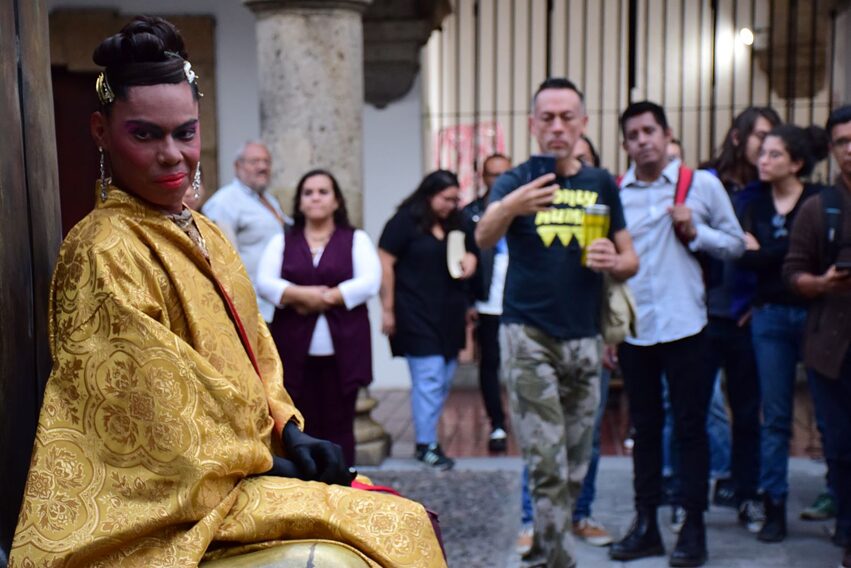It only surprises at first glance that, in Mexico, an exhibition about the queer movement takes place in a former monastery like the Ex Convento del Carmen in Guadalajara. In the mid 19th century, with its reform laws, the liberal government of President Benito Juárez expropriated and nationalized church property across Mexico. Due to this specific historical situation, many cultural organizations today are located in former monasteries, churches, and church buildings.
What makes the Guadalajara edition of Queer as German Folk stands out is that it goes beyond the core exhibition. Thanks to the work of the two curators Mario Wandu and Cuaco Navarro, in one of the most Catholic and conservative states of Mexico, the project was enhanced by the addition of + La Okupa Cuir. This enhancement functions as an exhibition within the exhibition, as a parasitic infiltration of the original concept. By contrasting the texts and photographs of Queer as German Folk with artworks by LGBTIQ artists from Mexico, Costa Rica, Cuba, and Colombia, the curators provoke in order to ignite a discussion and question conventional, dominant narratives. Non-binary positions are the focus of the exhibition, which is accompanied by an extensive side program.
The provocation began at the exhibition opening on October 24, with a performance by the Muxe artist Lukas Avendaño. For the indigenous Muxe of the Isthmus of Tehauntepec there are no clearly assigned gender identities (see also the textQueer: No. Queer-po muxe: Yes by Avendaño). Individuals born with male sexual organs naturally take on roles that are regarded as traditionally female. The Muxe do not have words for “he” or “she,” as these categories simply do not exist. In his performance, Avendaño oscillates between the conventional roles of the “male” seducer and the “female” seduced. As Avendaño changes roles, Avendaño undermines identities. The performance is a denunciation of the moral concepts that constrict people, of the social constraints that oblige us to assume identities, of the societal taboos that lead to trauma and psychological damage, of those who oppress others because of their sexual preferences. It is also a denunciation of a country marked by drug wars, by the disappearance of more than 46,000 people (including Avendaño’s own brother), by looking the other way, by impunity.
Like the performance, the entire + La Okupa Cuir contains a utopian aesthetic moment in the hope that identities based on biological gender differences will become irrelevant for human coexistence and everyone will be able to slip into whatever roles they please.
The exhibition poster also highlights this alternation between “woman” and “man.” Two snails, whose hermaphroditism underscores the organizers’ rejection of unambiguous gender identities, embrace each other in a pink sexual act that symbolizes the absolute insignificance of gender determination. + La Qkupa Cuir does not want to be “L,” or “G,” or “B,” or “T”, or “I,” or “Q”, but simply “H” like human.






















